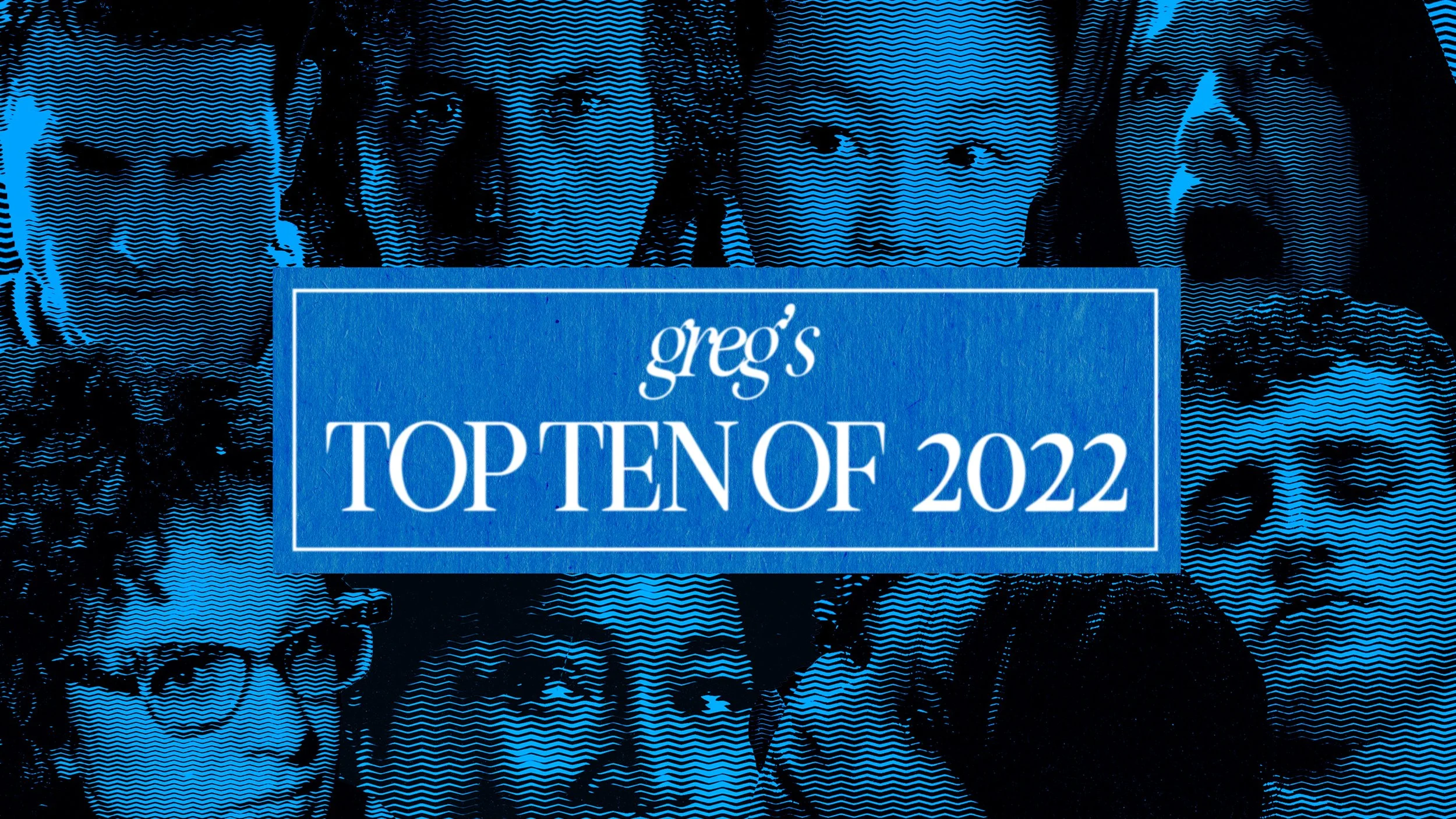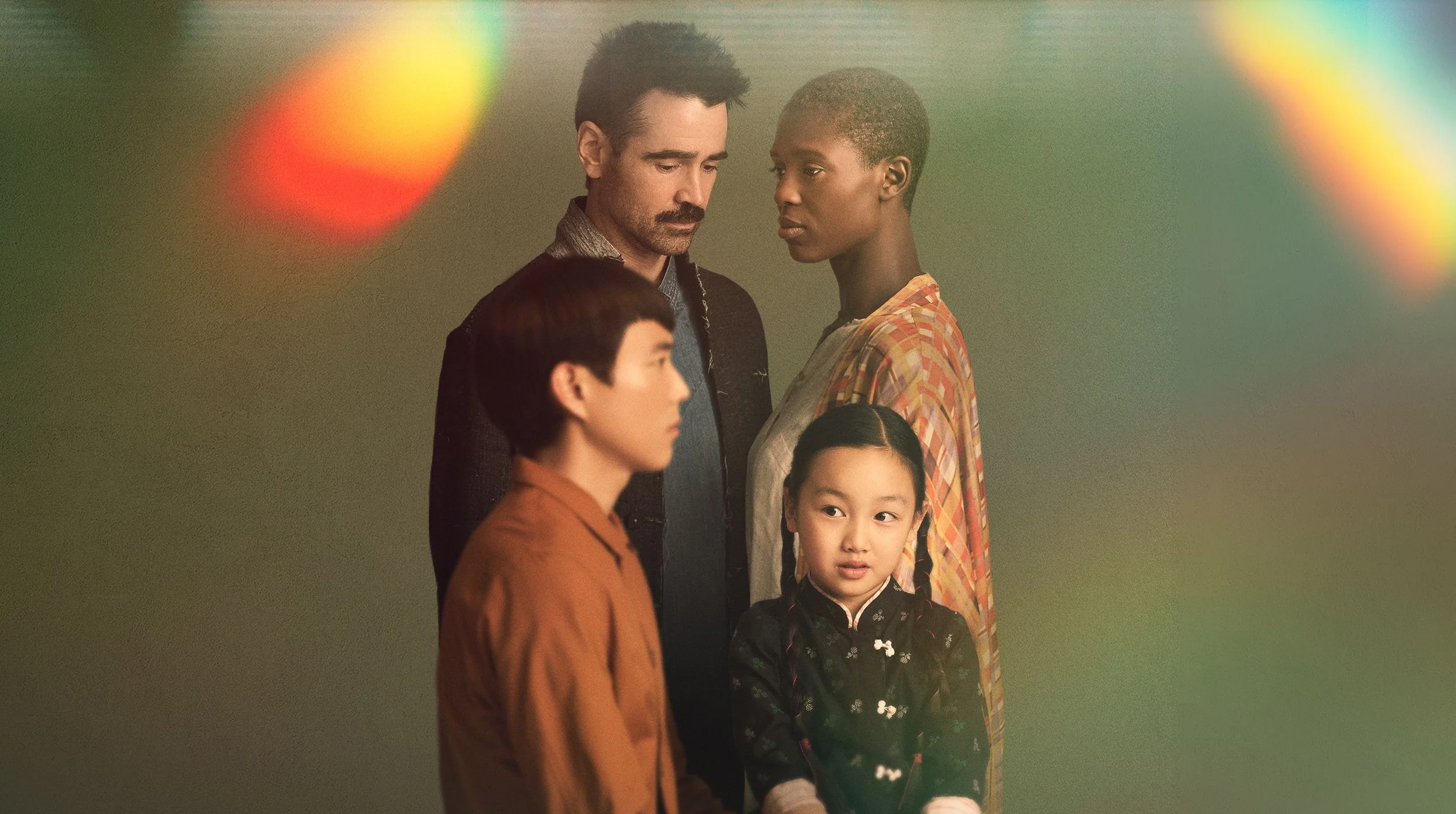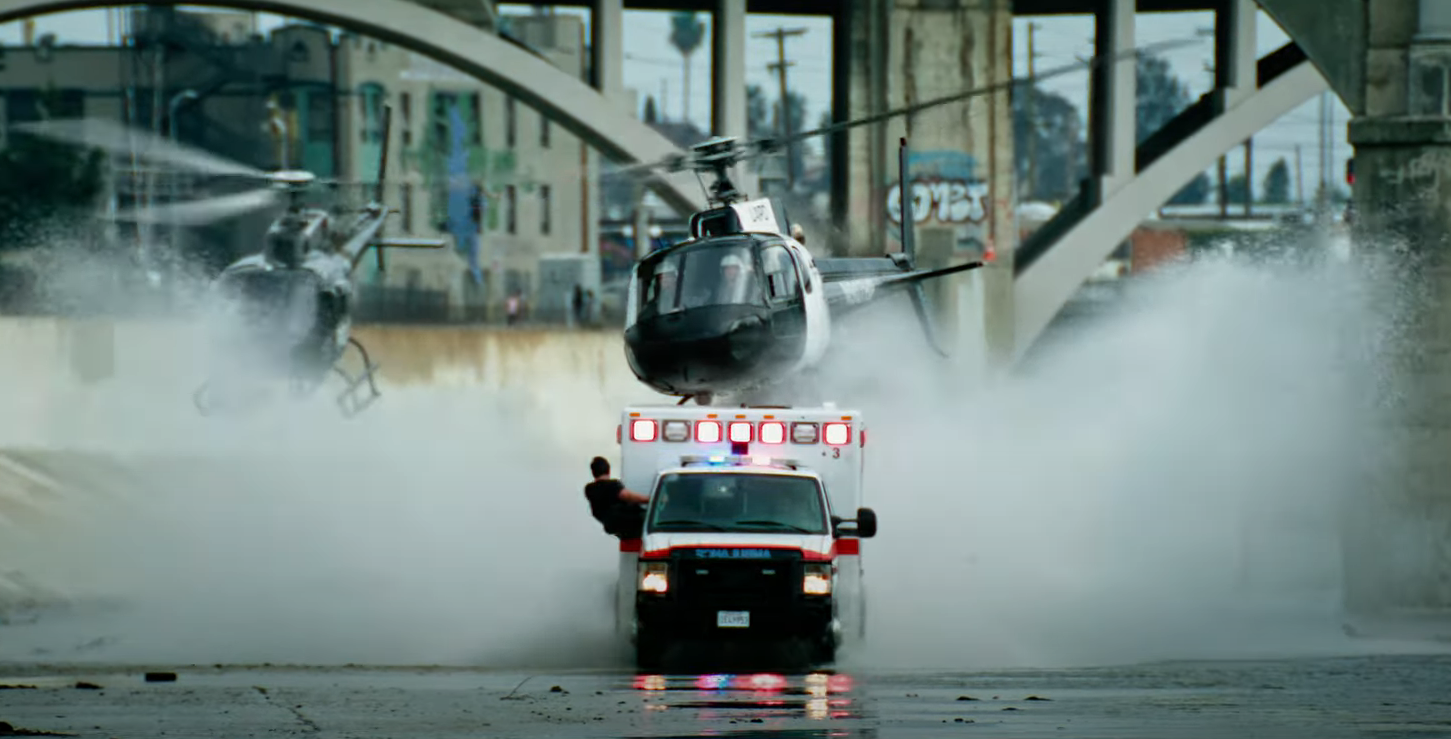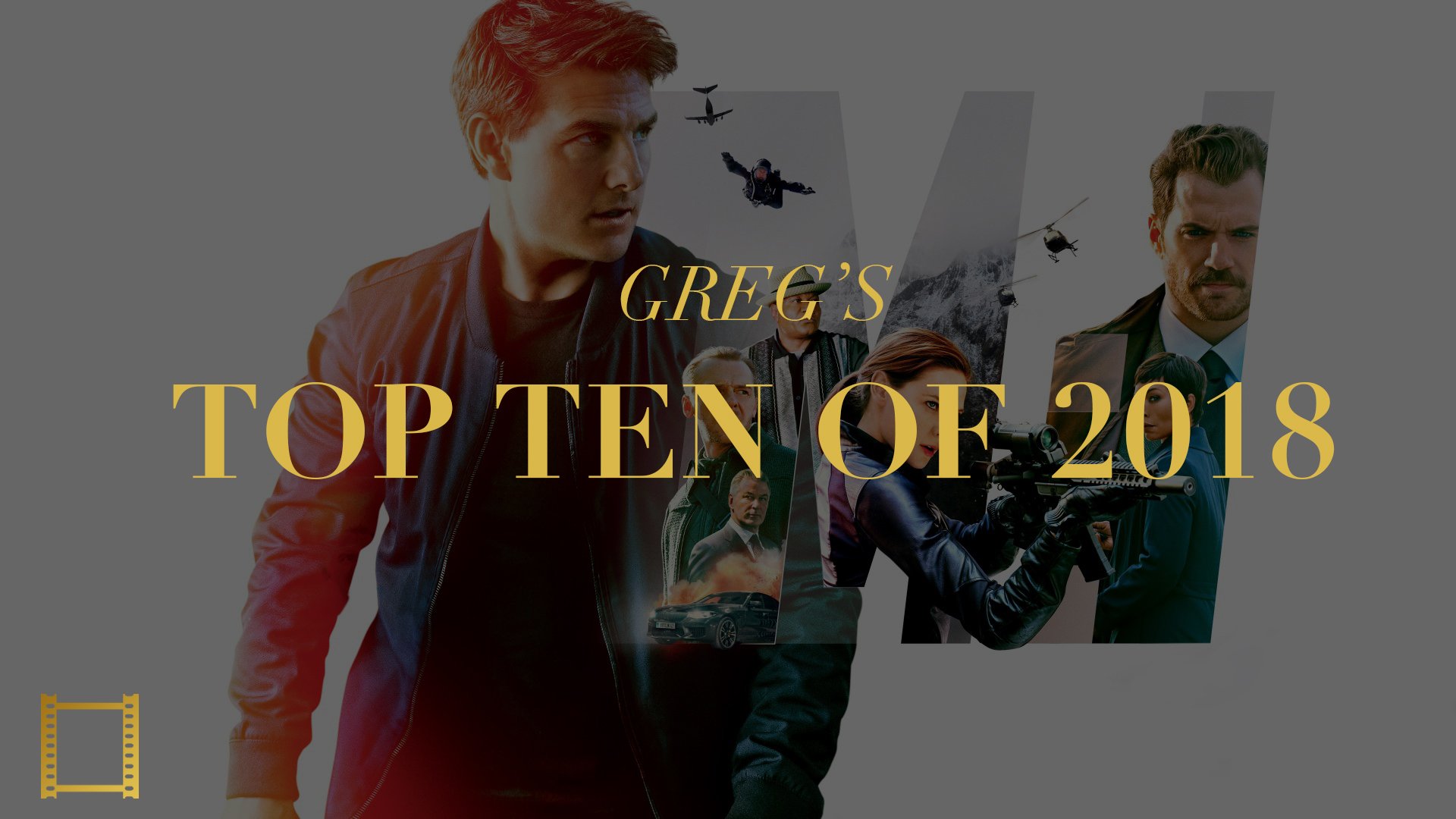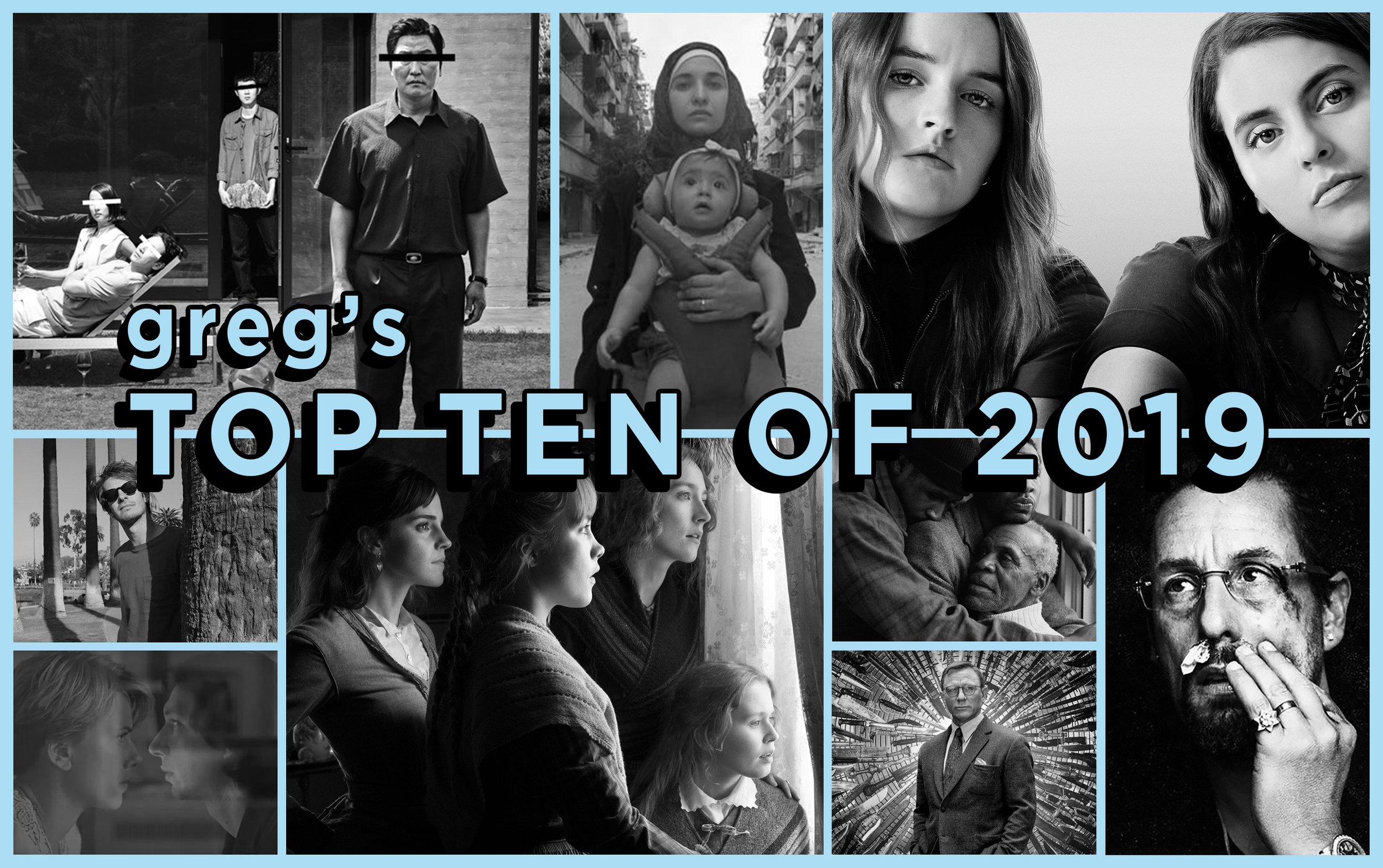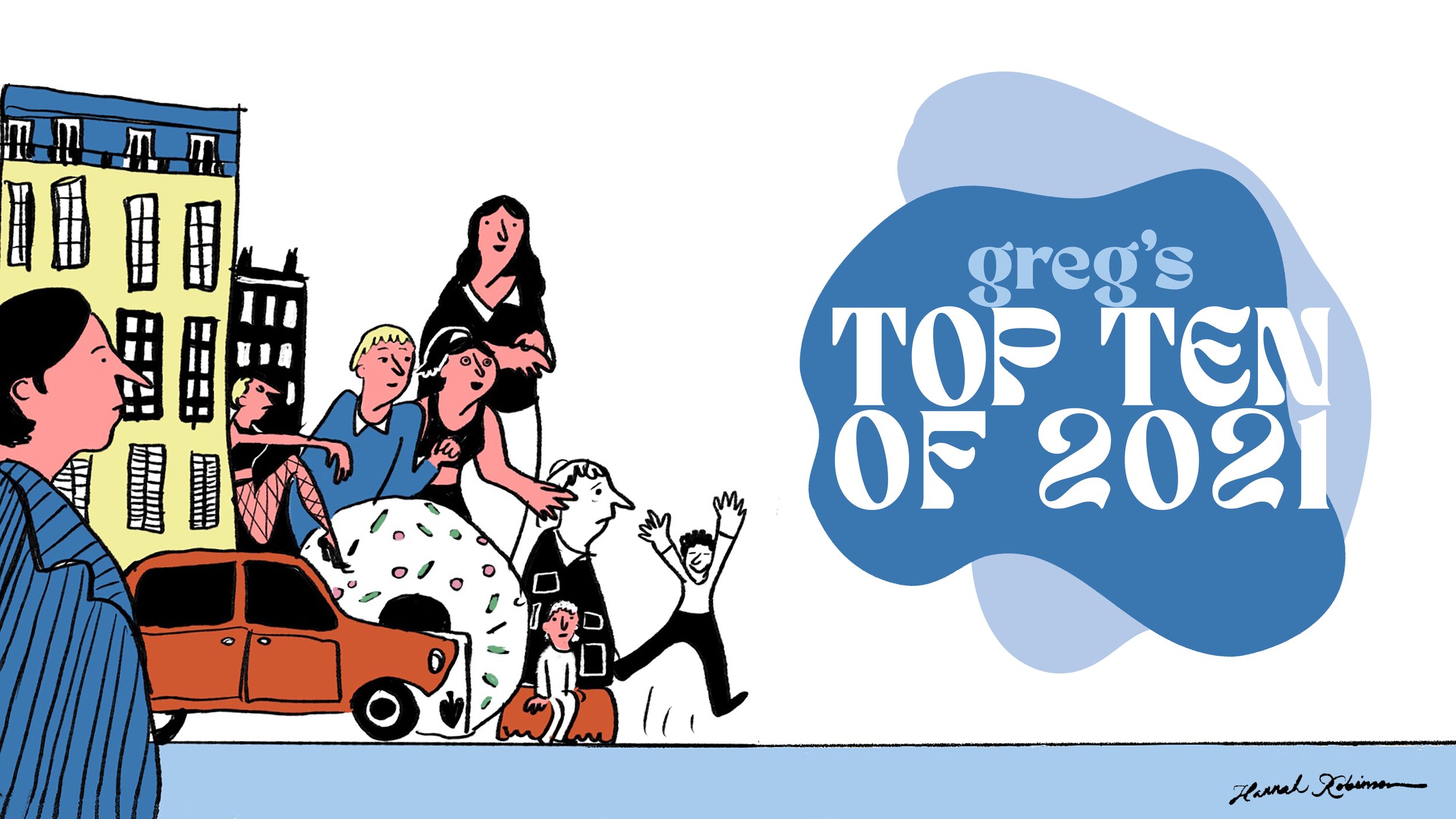Greg’s Top Ten Films of 2022
“What’s a bad miracle?”
In 2022, I saw fewer new releases than any previous year I’ve made a top ten. Of the 272 films I watched last year, only 61 were new releases. For comparison, that number crossed or neared 100 in the past. How or why this year was different could be any number of things — a greater interest in exploring cinematic blindspots, moving between states, starting a new job, etc. — but truth be told, I just think 2022 was just an okay year for new releases.
It might be heresy to say, but I found greater enjoyment from the loud brass of the big screen spectacle than the vast majority of quieter award contenders (and even some festival favorites). This is usually never the case, but credit where credit is due, the blockbuster, and the adjacent $100 million passion project, were frequently among my favorite films of the year. Could Hollywood be turning a corner? I wouldn’t hold my breath, but at least for this one fleeting year, it felt like better sensibilities prevailed and big screen spectacle lived up to its fullest potential.
—
Honorable Mentions
Babylon (Damien Chazelle), The Fabelmans (Steven Spielberg), Avatar: The Way of Water (James Cameron), The Batman (Matt Reeves), Jackass Forever (Jeff Tremaine)
—
10. Decision to Leave
When detective Hae-joon investigates the climbing accident of a local immigration agent, he begins to suspect that the wife, Seo-rae, is the one responsible. However, what he didn’t bargain for is how he would fall so deeply and in love with her, jeopardizing both his marriage as well as the case itself. A premise like this has been done to death many times before, with the makings of a conventional noir written all over it, but what differentiates Decision to Leave is director Park Chan-wook’s masterful direction behind the camera. The flow of information comes fast, making it difficult to pick up on all the little things Park is doing, but his attention to framing, perspective, and camera movements feel naturally entwined with the story and characters.
This is not even mentioning how Park upends the conventional narrative structure to build suspicion between Hae-joon and Seo-rae. Half way through the film, Decision to Leave does something of a reset, asking the audience to interrogate new events knowing what occurred in the first half. The result toys with audience expectations on the back of an aching romance with the kind of twists and turns you would expect from someone like the great Park Chan-wook.
—
9. RRR
It’s 100% maximalism, 100% of the time for the sensational RRR. Though the film may not be based in fact — telling a historical fiction where real-life Indian revolutionaries Komaram Bheem and Alluri Sitarama Raju team up against British imperialism — director S.S. Rajamouli is free to create an expansive, three-hour epic that pushes the cinematic envelope in every conceivable way. Like most epics, the film has the requisite endearing romance and deeply-felt melodrama, but what really makes RRR stand out is its penchant for action spectacle. Sweeping set pieces under excessive circumstances are more absurd than realistic, but the absurdity is all apart of the film’s alluring charm and merit as it constantly gets bigger and better with each subsequent scene. Rajamouli’s larger than life brand of filmmaking redefines what can even be captured on film, constantly bursting at the seams with genuine creativity and heartfelt passion for the form that has very few comparisons at this size.
—
8. White NOise
Noah Baumbach’s adaptation of Don Delillo’s White Noise grapples with the pervasive sense of dread we face on a daily basis. In the wake of a highly toxic chemical spill that evacuates the whole town, Jack (Adam Driver) finds his quaint suburban lifestyle uprooted. His kids look to him for answers he does not know while his wife Babette (Greta Gerwig) takes a mysterious drug she keeps secret from him, even when confronted on the matter. Things Jack thought were constants are suddenly unknowns and the unease of societal collapse all around him is starting to take its toll. Ripe for modern parallels, White Noise feels like one of the few movies that adequately addresses what we’ve been feeling these past few years, and fortunately, its conceit is not so narrow in that it ties itself to the current climate. Due in no small part to Dellio’s underlying material, Baumbach captures the dreadful chaos of modern living at large, leveraging his signature dry humor and off-beat characterizations to give us a tinge of hope when asking the big question: what if death was nothing but a sound… uniform and white?
—
7. After Yang
While science-fiction commonly elicits existential questions from our android compatriots, on rare occasion does it find itself addressing cultural identity like After Yang. For Yang, said android who is given to seven year-old Mika as a means of bringing her closer to her Chinese heritage, he is engineered and programmed to replicate Asian identity. When Yang unexpectedly malfunctions and passes away, the family is left with his memory cube to help piece together his existence and the lingering impact he had on them.
From here, After Yang’s thematic focus arrives on three fronts: grieving through the living memory of someone lost, maintaining the integrity of the family dynamic in the face of said loss, and, the most compelling dissection of the film, determining our cultural identity. Through Yang, director Kogonada evaluates measures of our own identity when our heritage isn’t traditionally defined. The science-fiction setting usually concerned with sweeping, larger than life questions instead turns inwards on a quieter note, asking what traits define our cultural identity, and if not them, what constructs do. Within this genre, After Yang’s angle feels particularly novel, but what I admire most is how Kogonada leverages science-fiction to think deeply on themes that are so personal and universal. Oh, and it has an absolutely killer title dance sequence. I can’t forget that.
You can read Cinema As We Know It's review of the film here.
—
6. Ambulance
Low angle dutch tilts. Handheld, run and gun shooting. High-speed drone shots. Deliberately destroying cameras to get the best shot. And stitching it all together with fever pitch editing to create an action film lifted straight out of the early 2000s. These are what define Michael Bay’s creative tool kit, and they are as excessive as they’ve ever been with his latest feature, Ambulance.
Borrowing from Tony Scott’s Unstoppable, Ambulance begins with a simple premise that quickly turns into a two hour, manically-orchestrated extravaganza of destruction, absurdity, and “Bayhem.” The titular ambulance barrels down Los Angeles freeways and streets with reckless abandon, flipping over trailing cop cars and blasting through conveniently placed vendor stalls, all the while they are hounded by a pursuing team of FBI agents. The fact that Bay only shot this on a reported $40 million budget seems almost unbelievable given the chaos on screen, but it goes back to Bay’s affinity for and commitment to excess that this film works as well as it does. Had it been in his hands of anyone else, it surely wouldn’t be this indulgently great.
You can read Cinema As We Know It's review of the film here.
—
5. X
If a new edition of Men, Women, and Chainsaws were to be issued today, it would probably include X as the contemporary example of Carol Clover’s ideas converging in a post-modern context. This slasher sees a group of adult film stars shooting a porno on the rented homestead of an elderly couple who are none the wiser to troupes’ creative ambitions. As the shoot continues in the guest house, the couple begins to catch on to the sexual deviancy taking place on their property, and when night comes, they take action.
The “psychosexual fury” at the center of Clover’s thesis — where the killer goes on a murderous rampage as an outlet for their repressed sexuality — explicitly drives the conflict in X. Any subtext theorized by academia or fandom related to the sexual motifs of the slasher has been brought to the surface with director Ti West marrying smutty 70s exploitation cinema and gritty 70s horror — think a lurid version of The Texas Chainsaw Massacre without the horrific insanity. The cast of cannon fodder victims each have strong personalities with equally strong performances to match. The kills are well executed and satisfyingly gruesome. And most importantly, there is a spark of creativity and originality to the film, which is no small feat given how leather-worn the slasher genre has become.
You can read Cinema As We Know It's review of the film here.
—
4. All the Beauty and the Bloodshed
Telling the life story of renowned photographer Nan Goldin and her long-running activism against the Sackler family, director Laura Poitras’ latest documentary, All the Beauty and the Bloodshed, renders one person’s life story within the larger context of America’s opioid epidemic. Formalistically, AtBatB minimizes conventional documentary devices in favor of a more fluid structure, modulating between chapters of Goldin’s past and present, but what makes this doc so captivating is how Poitras tells Goldin’s story with a striking amount of intimacy. Leveraging both Goldin’s own testimony and her own archival materials, we are granted privilege into Goldin’s most personal moments — from her sister’s death to her own struggle with addiction — as a means of understanding Goldin’s activism and why this fight is so personal. As both a portrait of someone’s life and a searing condemnation of the Sackler family, Poitras succeeds at both.
—
3. Aftersun
Charolette Welles’ directorial debut Aftersun is nothing but subtle for most of its run time. Calum and Sophie, the father-daughter duo at the heart of the film, go on a weeks-long vacation before Sophie returns to her mother and starts a new school year. They do most everything one does on a vacation — relax by the pool, tour the local landmarks, make vacation friends, etc. — but between their interactions Wells alludes to something troubling beneath the surface, namely with Calum, who we come to understand suffers from depression that he hides from his daughter. Enriching the narrative is the added perspective of an older Sophie in the present day who is recalling this vacation from DV recordings; as an older Sophie looks back, she, and by extension the audience, starts to decipher where things went wrong.
How everything fits together remains a mystery throughout Aftersun, especially within Welles’ understated style, but when the film reaches its emotional climax with its final scene, everything becomes clear. Welles deploys her first and only appeal to emotion in the entire film and not only answers long standing questions we had, but also reframes entire segments of the film that came before. The film suddenly becomes a much richer testament to memory and how we remember past events when we were younger. Maybe our youthful innocence insulated us from difficulties our parents faced, something we can’t fully sympathize with until we ourselves face them or when we can look back with enough experience to fully realize what was going on. The fact that these deeply rich feelings and emotions all converge in this year’s most emotionally leveling scenes is really something to behold. You certainly won’t be able to listen to “Under Pressure” quite the same way again.
—
2. Nope
Jordan Peele’s third feature, Nope, looks to the skies with greater ambition and scale than anything he has directed or produced thus far. Since 2016’s Get Out, Peele has progressively improved upon his craft, and on a purely formal level, this is Peele’s most mature film to date. His sense of tone is much more attuned to the scene at hand. His new collaboration with director of photography Hoyte van Hoytema has only bolstered his keen sense of visual metaphor. And the overall size of his production is the biggest it’s ever been, making for one helluva time at the movies.
But for a film so engaged with spectacle it may come as a surprise that Jordan Peele’s ultimate critique in Nope is about our obsession with spectacle itself. On one hand, it’s a larger than life encounter with the third kind that leverages Spielberg-like wonder to keep our eyes glued to the screen. On the other, it’s a cautionary tale that asks us to interrogate our own leering gaze. Such contradictions make Peele’s work a deeply reflexive piece of cinema, one that holds the mirror to audiences and asks why we have such unhealthy and morbid urge to gaze at spectacle. “I will cast abominable filth upon you, make you vile, and make you a spectacle,” reads the film’s opening quote. Though we don’t initially understand its intention, by the end of Nope, you really have to wonder if the quote is more direct in its address than first thought.
You can read Cinema As We Know It's review of the film here.
——
1. Top Gun: MAverick
By now, Top Gun: Maverick needs little introduction. It’s a worldwide success that has received both critical and commercial success, but allow me belabor the point one more time: this film is a jaw-dropping blockbuster for the ages.
Top Gun: Maverick shows how true big screen spectacle has been largely absent from the American blockbuster for the better part of the last decade, and it’s in no small part that we owe such an experience to Tom Cruise. As one of the last true Hollywood stars in existence, Cruise has used his position to advance and preserve the theatrical experience in ways no other actor has done before. I mean let’s be real here: what other actor is flying their own jet? His influence, status, and image enable him to produce pictures that studios would never otherwise make, and it’s a fact reenforced with stunning results here.
Conventional wisdom would indicate that this sequel would be another example of Hollywood trotting out a long-dormant IP for easy cash, and while there is an argument to be made there, the film distances itself from those connotations by being far and away a better film than its predecessor by a significant margin. Real pilots carry out breathtaking stunt choreography that treat audiences to an unending supply of extraordinary, in-camera aerial images. A sense of ego-driven danger underscores every set piece, making every flight a near death experience that gets increasingly more dangerous until it reaches insane levels of anxiety in the third act — when audiences finally reach the “Coffin Corner” scene you’ll damn near faint. Taken as a whole, you get the sense that this film really shouldn’t even exist, not in this day in age. But isn’t that why we have Tom?
Over the years, it has been easy to take for granted what Tom Cruise brings to the table. He’s consumed the zeitgeist with his strange personality and public personal life, but in the last decade, when the state of blockbusters had been so dismal, it takes someone as insane as Tom Cruise, who is willing to put it all on the line for his craft, to remind us how great they can be. He is apart of a dying breed, and we’re lucky he’s still around to make films like Top Gun: Maverick, one of the finest blockbusters of the contemporary era.
You can read Cinema As We Know It's review of the film here.
—

